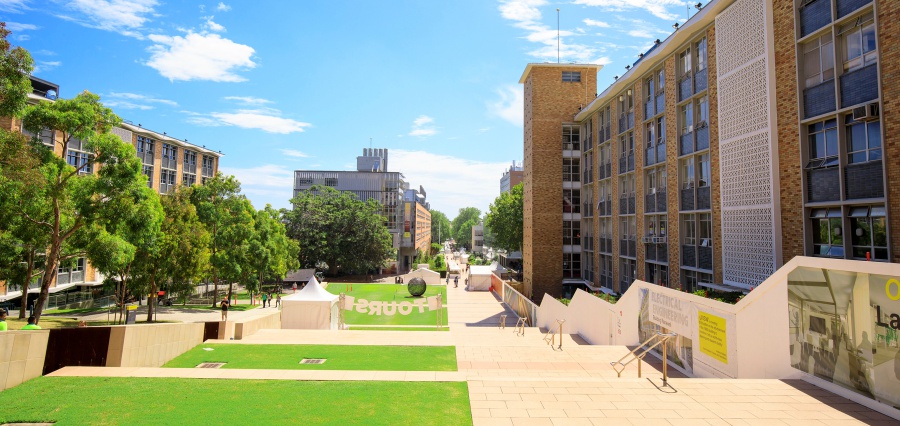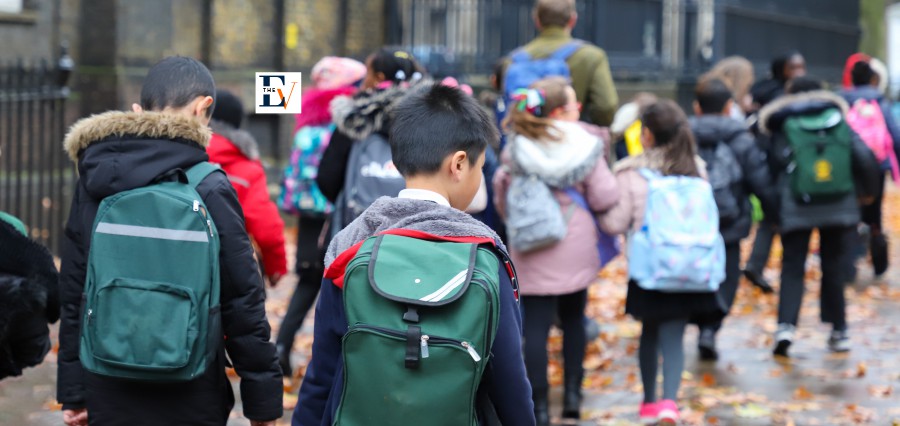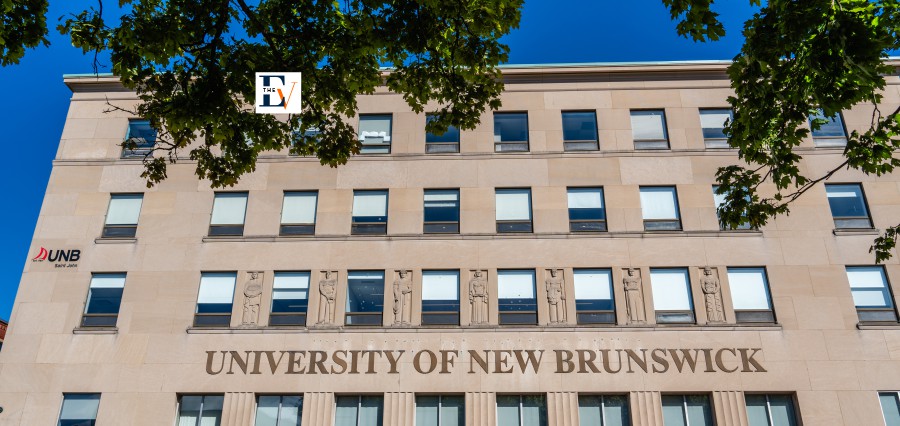The education and literacy development sector requires visionary leaders who are adept at navigating the complex intersections of race, language and migration to effect transformative change. In a context where traditional educational paradigms are challenged, individuals are empowered to embrace their transnational identities through innovative approaches to language and literacy. This is precisely the realm where Dr Patriann Smith excels.
Dr Smith stands as a guiding light of inspiration within the educational sector, leveraging her expertise to revolutionize English literacy and teaching methodologies. With a profound commitment to understanding the diverse needs of global audiences, Dr Smith harnesses the power of storytelling and transdisciplinary research to bridge cultural divides and ignite conversations that transcend traditional boundaries.
Join in to learn more about her endeavours!
Navigating Transnationalism
Dr Smith prioritizes transnationalism in her keynote presentations recognizing the global shifts in how millions function daily both online and across borders, as transnational natives. As a native of Saint Lucian origin who has resided as an immigrant and transnational in the US for over a decade, she emphasizes how immigration and transnationalism more broadly intersect with race, language use and broader semiotic repertoires. Her aim is clear—harnessing the potential of an immigrant and transnational ethos to address systemic educational challenges and foster collective and quantum imaginaries for a morally and ethically purposeful present and future.
Dr Smith’s work spans research, policy-making and practice in literacy and language, focusing on themes like ‘Black Immigrant Literacies‘ and ‘Translanguaging with Englishes.’ She highlights the importance of transraciolinguistic justice and a ‘Both-And‘ approach to education. As she explains, “English literacies and languaging can function as a basis for intellectual and spiritual flourishing within a transnational context.”
Through her presentations, Dr Smith illustrates how understanding and embracing transnationalism as a function of and extension beyond immigration can lead to a more just world. She emphasizes, “The new normal of transnationalism offers an untapped potential for transformative educational solutions.” This perspective underscores the significance of addressing racialization while also transcending its limitations, paving the way for a more inclusive and equitable educational landscape.
Innovative Perspectives
“For over a decade, I’ve championed a transdisciplinary approach to race, language and migration, revolutionizing English literacy and broader literacies,” explains Dr Smith participating in Open Access Government. This approach draws from diverse disciplines like applied linguistics, psychology, sociology, literacy, and more, creating a rich tapestry of knowledge that informs her keynote speeches.
“I operate at the nexus of multiple intersectionalities,” Dr Smith notes, emphasizing her ability to engage diverse audiences in education, from teachers and educators to parents, researchers and policymakers. This breadth of insights also connects her to stakeholders in communities beyond education, demonstrating the broad impact of her transdisciplinary work.
Bridging Theory and Reality
Dr Smith’s keynote speeches begin with a profound connection to her faith. She explains, “I connect to God, who sustains my life and who, through divine revelation, demonstrates to me daily how to focus best on what matters most to individuals and their respective communities.” This spiritual grounding informs her approach to engaging diverse audiences interested in immigration, transnationalism, racialization, critical literacy, and literacy teacher education.
Diversity and Education
For audiences focused on migration and internationalization influencing literacies, Dr Smith starts by highlighting global migration realities. She emphasizes, “From news sources, I emphasize the multiple geographic regions across the world currently affected by the realities of migration.” This approach sets the stage for a deeper exploration of how migration shapes language and literacy practices.
When addressing racialization and its impact on English within critical literacy, she engages audiences with videos illustrating race as a social construct across different regions. This interactive method fosters connections between theoretical concepts and lived experiences.
From Theoretical Constructs to Tangible Realities
For those interested in literacy teacher education and intersectionality around race, language and migration, Dr Smith begins with dynamic visuals like teacher-focused memes. These visuals serve as accessible entry points into complex educational discussions.
Regardless of the audience, Dr Smith grounds her presentations in everyday realities. “I appeal to the everyday realities within which communities of academics or non-academics are immersed as the basis for grounding the connections to research that I present,” she explains. For academic audiences, she delves into theoretical constructs, while for non-academic audiences, she facilitates conversations on applying abstract ideas to real-life contexts.
Her ultimate goal is to bridge the gap between theory and practice. “I work to connect abstract theoretical constructs to tangible mechanisms that individuals can utilize in their everyday lives and vice versa,” Dr Smith emphasizes. This approach ensures that both academic and non-academic populations benefit from her research and insights, fostering meaningful connections and applications within and across diverse communities. Through her engaging and accessible presentations, Dr Smith catalyzes transformative dialogue and action on critical issues intersecting race, language and migration.
Cultural Foundations
“In August 2015, I delivered a particularly impactful keynote speech at UNESCO New York titled ‘The Central Role of Culture to Advancing Literacy and Language across Nations,‘ Dr Smith recounts, “The speech functioned as a catalyst for change at the UNESCO Center for Global Education summit designed to foster an embracing of the Sustainable Development Goals (SDGs).” This keynote, delivered almost a decade ago to leaders representing countries from across the globe, emphasized how literacies of migration can be engineered locally, nationally and internationally by leveraging the strengths of transnational natives.
The speech, invited by UNESCO, resonated with global leaders, highlighting the importance of culture in advancing literacy and language across borders. “The assets of transnational natives across both symbolic and geographic worlds were highlighted then as avenues the could be harnessed to transform the post-2015 development agenda,” Dr Smith explains.
By focusing on the intersection of culture, literacy and language, Dr Smith’s keynote offered practical insights into fostering sustainable development through education. This approach underscores the transformative potential of embracing cultural diversity and transnational perspectives in addressing global challenges.
The impact of this keynote extends beyond the summit, shaping discussions and initiatives in international education and development. Dr Smith’s emphasis on harnessing cultural assets for literacy and language advancement continues to influence policies and practices worldwide, reflected in the pivotal role of culture in achieving the 2024 UNESCO SDGs, in particular Goal 10 – reducing inequality within and among countries; Goal 16 – promoting peace and justice; and Goal 17 – strengthening the implementation and revitalization of global partnerships.
Connecting through Keynote Discourse
“I enjoy highlighting the varied regions of the world from which participants originate, allowing individuals from various transnational spaces to feel welcomed into the community during my keynotes,” shares Dr Smith. This inclusive approach creates a sense of belonging and connection among diverse audiences.
Utilizing images that represent transnational realities and sharing rich anecdotes from real-life experiences enriches Dr Smith’s presentations, sparking curiosity and engagement among listeners. Using visuals and real stories resonates deeply with the audience, compelling them to want to learn more.
Drawing on her keen sense of humour, which has been a source of joy to her family since childhood, Dr Smith effectively connects with audiences, especially when discussing topics like race, immigration and language that often fuel debates. Her humour adds warmth and relatability to complex discussions, fostering a more open and authentic atmosphere.
Furthermore, Dr Smith values designing spaces for moments of vulnerability during candid conversations with her audiences. “Creating strategic moments of vulnerability is a delightful avenue for engaging with fellow humans during my keynotes,” she reflects. This openness encourages authentic connections and deeper engagement with the themes being discussed, many of which can be serious but are made accessible through emphasizing our shared humanity.
A Dual Approach
“I determine my focus for a presentation by inquiring about the audience’s nature and interests,” explains Dr Smith. Understanding the demographics, interests and goals of the audience helps her tailor keynotes to suit the needs of individuals in her audience respectively.
“For an academic audience,” Dr Smith elaborates, “I use diagrams alongside text and images, appealing to their appreciation for of the scientific method.” This approach aligns with the preferences of an academic audience, emphasizing theoretical constructs and scholarly discourse.
Conversely, for audiences more focused on practical content and everyday realities, Dr Smith adopts a different approach. “I use videos, images and popular culture representations,” she notes, “to connect with their daily experiences.” This method resonates with audiences seeking tangible applications of the knowledge presented.
Enriching Global Understanding
“Storytelling is critical to my keynote speeches because it demonstrates the humanity within us all,” Dr Smith emphasizes. By embedding personal narratives in her presentations, she humanizes herself to the audience, fostering a deeper connection with their community.
“I use storytelling to showcase the lives of research participants,” Dr Smith explains, “enabling audiences to recognize transnational insights as integral to how many people naturally relate to the world.” This approach which often takes the form of ‘authentic narratives,’ illustrates diverse perspectives and experiences enriching the audience’s understanding of global interconnectedness.
Storytelling, according to Dr Smith, transcends intellectual engagement, reaching into the soul and heart of the audience. “It stirs up the consciences of their just imaginations,” she notes, highlighting the profound impact of narrative—the story—on human sensitivity and understanding.
Through storytelling, research findings become more than just academic insights. “They become part of the living, breathing heartbeat of humans,” Dr Smith emphasizes. This transformational process encourages audiences to reimagine the world through the lens of shared experiences and interconnected narratives.
Inspiring New Perspectives
“I enjoy adapting presentations to meet the unique needs of various audiences by staying engaged with social media platforms like TikTok, Twitter, Facebook, Instagram, WhatsApp, and daily news outlets such as BBC, CNN, NPR, as well as region-specific news sources,” Dr Smith shares. This proactive approach allows her to stay connected with diverse global populations, understanding their evolving interests and concerns.
By immersing herself in the ‘heartbeat and frequency‘ of different populations, Dr Smith tunes into the collective consciousness shared across the world. This awareness enables her to tailor presentations to resonate with the human sensitivity of her audience members.
“I aim to challenge long-standing assumptions that individuals may have developed about their everyday worlds,” Dr Smith explains. By leveraging her insights into what moves specific populations at specific times, she gently nudges audience members to explore new perspectives and expand their thinking.
Through this deliberate engagement with social media and global news, Dr Smith remains attuned to the evolving dynamics of society. This deep understanding informs her ability to create impactful presentations that inspire reflection, dialogue and transformation among diverse audiences.
Sparking Systemic Change
“I am deeply interested in the impact of my keynote speeches as a catalyst for transforming the educational arena, specifically revolutionizing literacy and English teaching,” Dr Smith emphasizes. She envisions her presentations as powerful tools for sparking systemic changes in education, driven by her connection with diverse publics around the world.
Through her keynotes, Dr Smith aims to empower individuals and organizations to use her insights to effect system- level transformations. “Many of these diverse publics have the capacity and reach to implement the ideas presented,” she explains. This potential for impact motivates her to continue advocating for innovative approaches to literacy and language education.
Dr Smith sees her speeches as a source of hope for millions seeking to restore purpose to their lives. She notes, “Intentional repositioning of literacies, languaging and broader semiotizing, is crucial for individuals navigating their evolving transnational nativity in the world.” By highlighting the transformative potential of language and literacy, Dr Smith inspires hope and facilitates pathways for personal and societal growth.
Adaptability in Action
“Yes, challenges can and do arise during keynote presentations, such as technology failures, audience preferences for more interactivity, or the need for even more practical content than initially planned,” Dr Smith acknowledges. These challenges are particularly pronounced in virtual settings where limited audience responsiveness can impact delivery.
Dr Smith explains, “In such situations, I remain connected to individuals who provide feedback during the presentation.” These individuals serve as a valuable sounding board, offering insights, often non verbal, that inform necessary adjustments to the focus or format of the keynote in real time.
The Pulse of Change
“I remain connected to professional development organizations across key fields and disciplines that inform my keynote speeches, such as the American Association of Applied Linguistics (AAAL), American Educational Research Association (AERA), American Psychological Association (APA), Caribbean Studies Association (CSA), International Literacy Association (ILA) Literacy Research Association (LRA) where I have just been elected as Vice President, National Council of Teachers of English (NCTE), Teaching English to Speakers of Other Languages (TESOL), and the World Literacy Foundation (WLF),” Dr Smith highlights. These affiliations provide valuable insights and perspectives that enrich her presentations.
In addition to professional organizations, Dr Smith stays consistently engaged with local, national and international news sources and social media outlets. “This allows me to remain updated about the most pressing challenges facing humanity at various levels,” she explains. Such continuous engagement with current events informs the relevance and timeliness of Dr Smith’s keynote content.
Shifting Paradigms
“Measuring impact via my keynote speeches takes multiple forms,” explains Dr Smith. After each presentation, she reflects by asking specific questions to gauge the influence of her speeches:
- “What are the ways in which I may have transformed the thinking, and potentially, the life of at least one soul by appealing both to their intellect as well as emotions?”
- “What are the ways in which the keynote stirs individuals in the audience to advocate for system- level changes at local, national, or international levels based on a transnational ethos?”
- “How do long-standing policies about the intersections of race, language, and immigration continue to shift based on a transdisciplinary approach in approaches to curriculum, education and more broadly, academic advancements across the field?”
- “How have the interactions surrounding the keynote allowed me to draw people closer to developing a character that is like Christ and also, to become even more representative of Him myself as a human?”
Ultimately, Dr Smith aims to use her keynote speeches as a vessel of humility, fostering cross-cultural, cross- linguistic, and cross-racial understanding as well as recognizing the potential of quantum consciousness to restore peace and justice in the world. Through thoughtful reflection and meaningful engagement, she strives to inspire positive change and personal as well as spiritual growth among her audiences.
Pioneering Racial and Linguistic Justice in Literacy Education
Dr. Patriann Smith presently serves as a Professor at the University of South Florida, where her research focuses on the intersection of race, language and (im)migration in literacy teaching, research, assessment, and policy.
She draws insights from Black Englishes and the Black literacies and languaging of Afro Caribbean immigrants, other Black immigrants in the United States (e.g., African), and Black American students (e.g., African-American) to propose solutions that advance racial and linguistic justice in literacy.
Her work also explores the Englishes of Black populations in their English-speaking Caribbean locales to make recommendations for advancing literacy teaching across local, national, and international boundaries.
Dr. Smith has introduced innovative concepts such as ‘a transraciolinguistic approach,’ ‘raciosemiotic architecture,’ and the framework for ‘Black immigrant literacies’ to reenvision literacy education for all students, including monolingual, bilingual, and multilingual learners. She has served as Co-Principal Investigator of the USAID-funded $3.6 million “RISE Caribbean” initiative and co-founded the Caribbean Educational Research Center (CERC), which aims to enhance research based decision-making in the Caribbean.
Her research is widely published in prestigious journals, including The Reading Teacher, Reading Research Quarterly, American Educational Research Journal, International Multilingual Research Journal, and Policy Insights from the Behavioral and Brain Sciences.
Dr. Smith authored “Black Immigrant Literacies: Intersections of Race, Language, and Culture in the Classroom” (2023) and “Literacies of Migration: Translanguaging Imaginaries of Innocence” (2024), and co-authored “Affirming Black Students’ Lives and Literacies: Bearing Witness” (2022). She also co-edited “Educating African Immigrant Youth: Schooling and Civic Engagement in K–12 Schools” (2024).
Dr. Smith is the incoming Vice-President of the Literacy Research Association (LRA), highlighting her influential role in shaping the future of literacy research and education.






